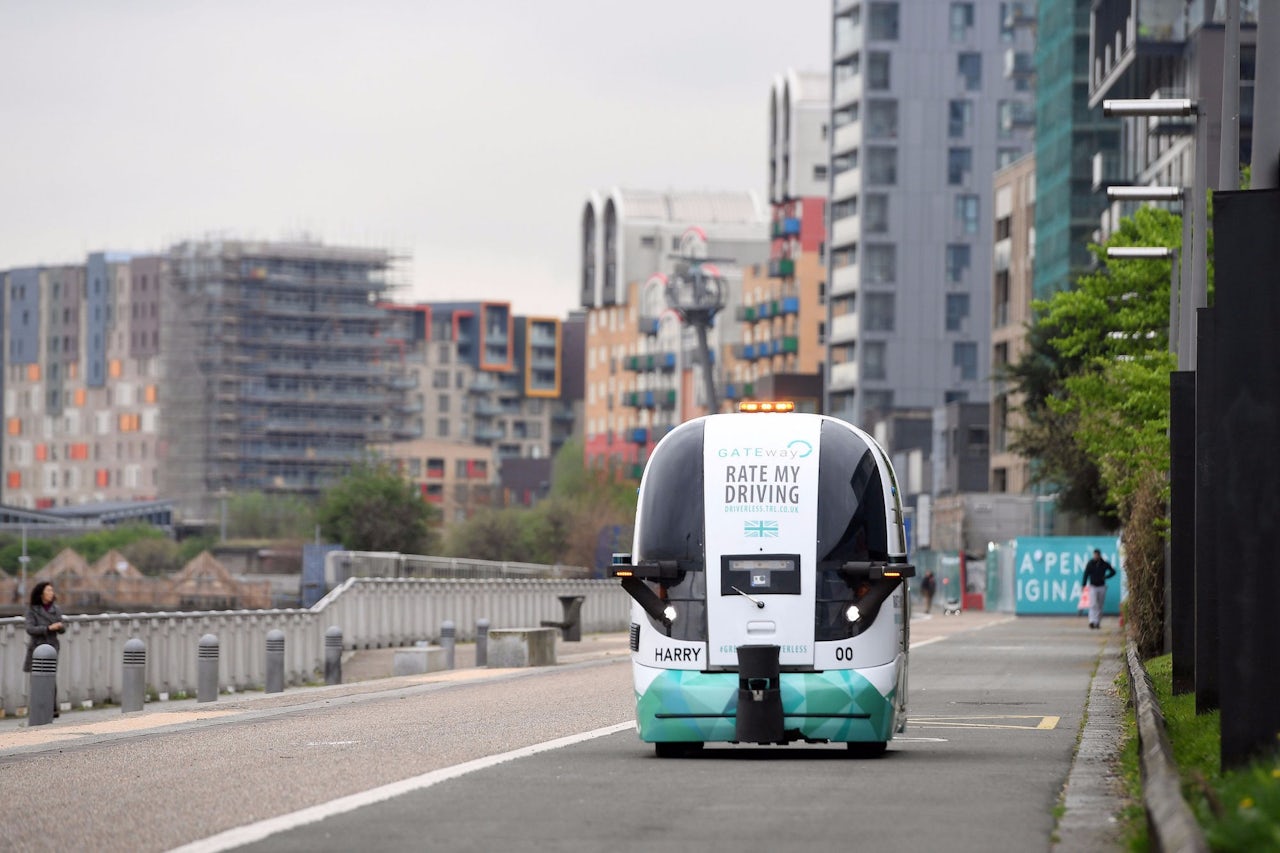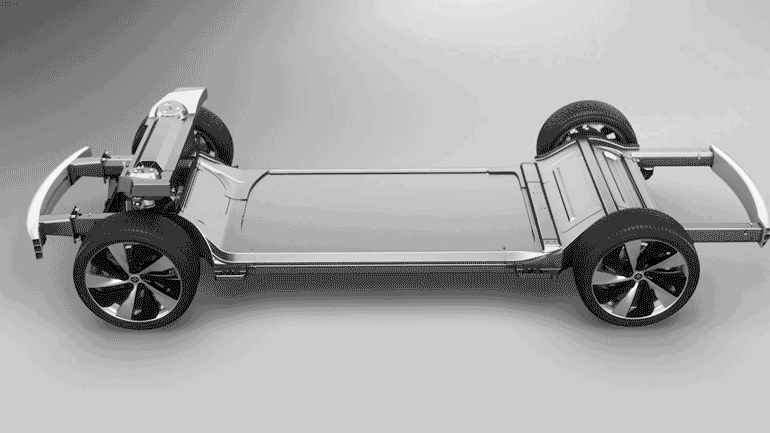There are two types of driverless cars on the way. First, there's what most people imagine: the car already in your driveway (or the one you can't afford or don't want to own) with tech-enabled super powers to take over the wheel on the highway, when you're stuck in traffic, or when you're drunk.
The second type is an autonomous pod, a slow moving minibus that looks more like an airport shuttle than a car. And it's not only how most of us will get our first autonomous ride, but it's way more useful, too.
Both types are already on the road in London. If you happen to swing by the borough of Greenwich, such pods are currently pootling the pavements as part of a partnership between government, industry, and academia called the Gateway Project.
Rather than take passengers from their own door to the destination of their choosing — the ease of travel that self-driving cars appear to promise — these autonomous pods simply carry passengers from one specific, set point to another.
The pod currently being trialed is named Harry. It clearly necessitated a name because it's adorable. With bug-eye windows, a smile on its front nose, and blue-green colors, it looks like a land-based robotic dolphin. Harry maxes out at 10 MPH and is limited to the pavements, not yet braving car-and-bike-filled roads. And while the shuttle is fully autonomous, with a camera watching up to 100 meters ahead, there's a “technician” on board to stop it if something goes awry.
This isn't a car. It's a bus — not that there's anything wrong with that. Londoners may compare it to the DLR, the Docklands Light Rail, an elevated train with no driver that ferries people between set stops.
In large cities like London, public transport is the only way we'll all be able to get around as populations continue to grow, roads become congested, and carbon emissions destroy the air (and the rest of the planet).
But one problem with public transport — particularly in sprawling London — is there's often wide distances to cover once you're off the train, tube or bus, the so-called “last mile” that's also problematic for parcel deliveries. Most Londoners will find it more convenient to angrily speed walk the last mile to their destination, taking out slow-walkers with their elbows, or hop on a so-called Boris Bike, the local bike-share scheme, rather than wait for a pod to become available. However, the pods could prove handy for anyone with limited mobility, even if only ferrying people from transport hubs to local destinations. That's the format tested in a previous trial of a similar technology in another British city, Milton Keynes, last year.
Public transport is the only way we'll all be able to get around as populations continue to grow
Future iterations of the pods may let riders book a specific ride, taking them from the local Underground station directly home, but this trial is a far way from that. It's limited to a two mile, set loop on pavement, but the project runners hope locals will be able to book them via an app to get home by 2019.
To achieve that, they'll need to figure out how to share roads with cars and succeed off piste on any route. But even if the technology never fully gets there — or governments decide not to fill roads up with slow-moving pods that pause when something gets in their way — it's easy to see the likes of Harry as an on-demand tram with specific routes in a designated lane shared with cyclists and buses, dropping off riders as close to their destination as possible.
That's less exciting than an always available robo-chauffeur taking us each door to door, but it solves bigger problems than our own laziness. Any transport innovation needs to get cars off of roads, not add them. For example, the rise of Uber has led to more traffic on London roads, with tens of thousands more cars circling for passengers.
On the other hand, autonomous pods make existing mass, public transport better, especially for those who need it most. That's good for reducing emissions and getting less able people back out into the community, without them needing to shell out for an expensive driverless car or for more expensive taxi-style services.
Better buses and trams might not be as sexy as a Tesla that takes over the wheel or a driverless Uber, but it solves one heck of a lot more problems.

